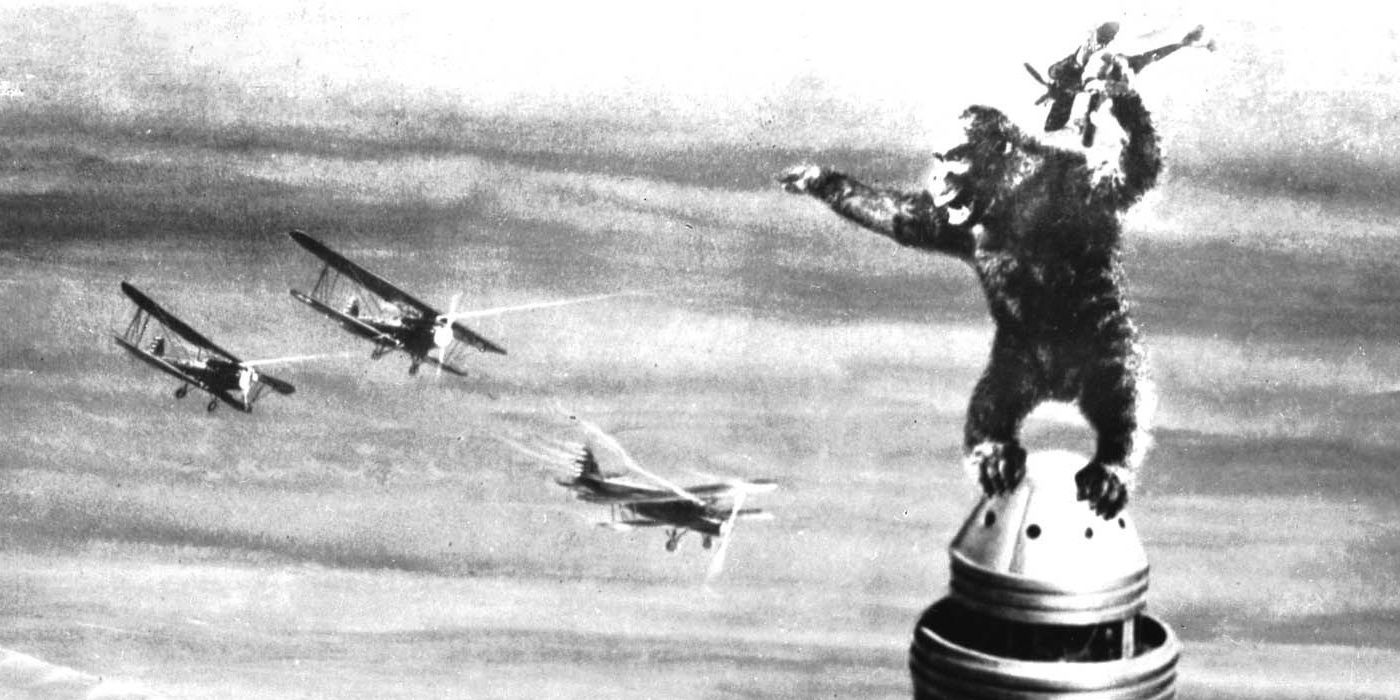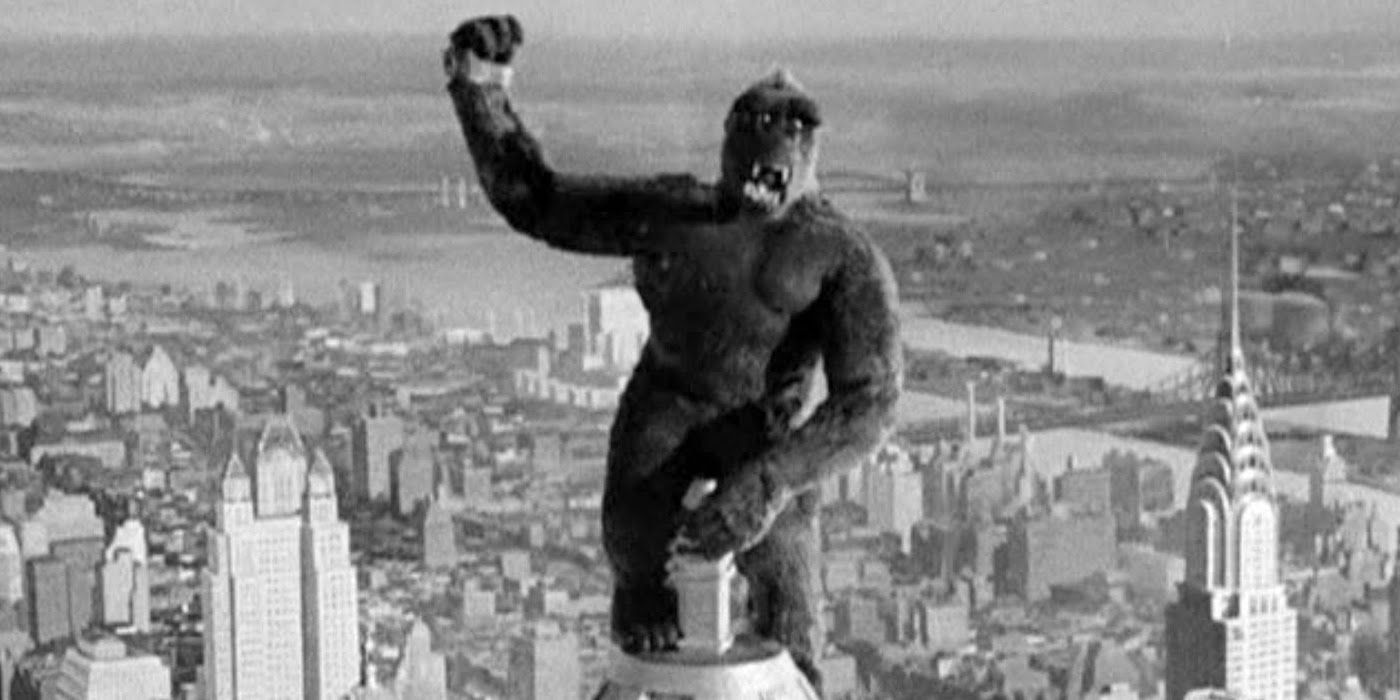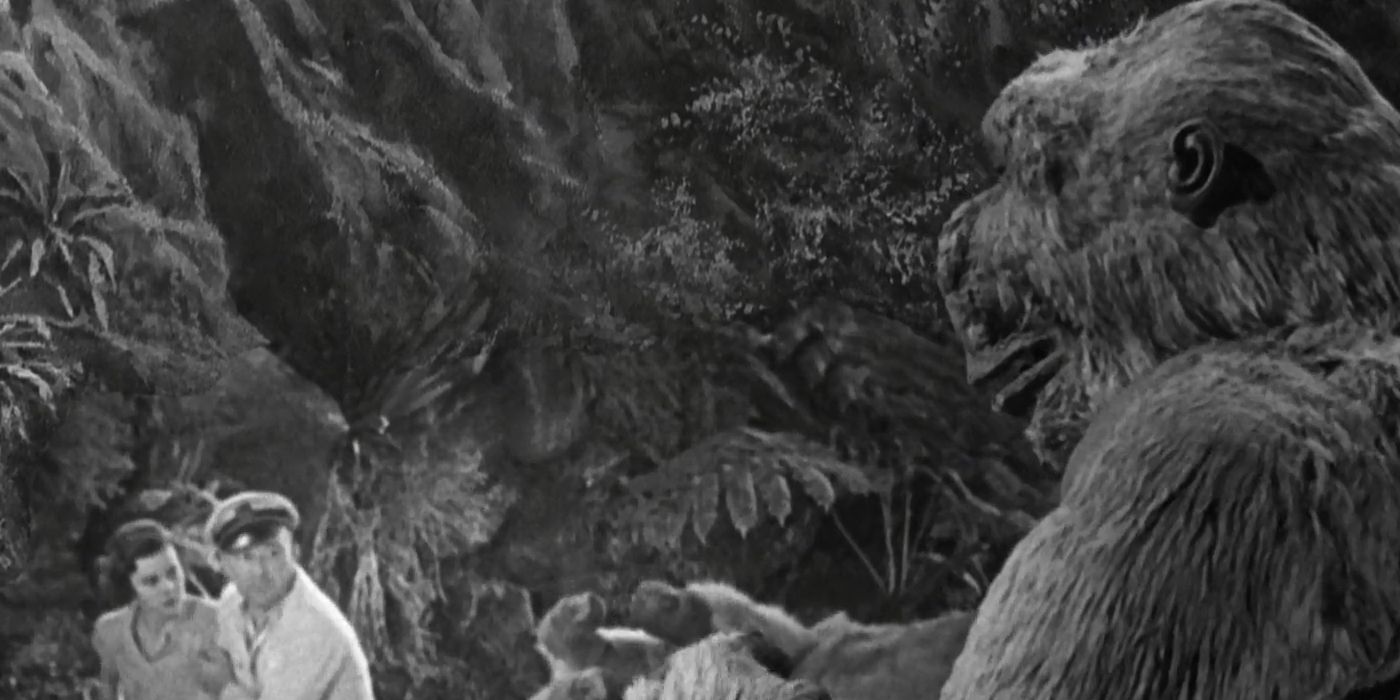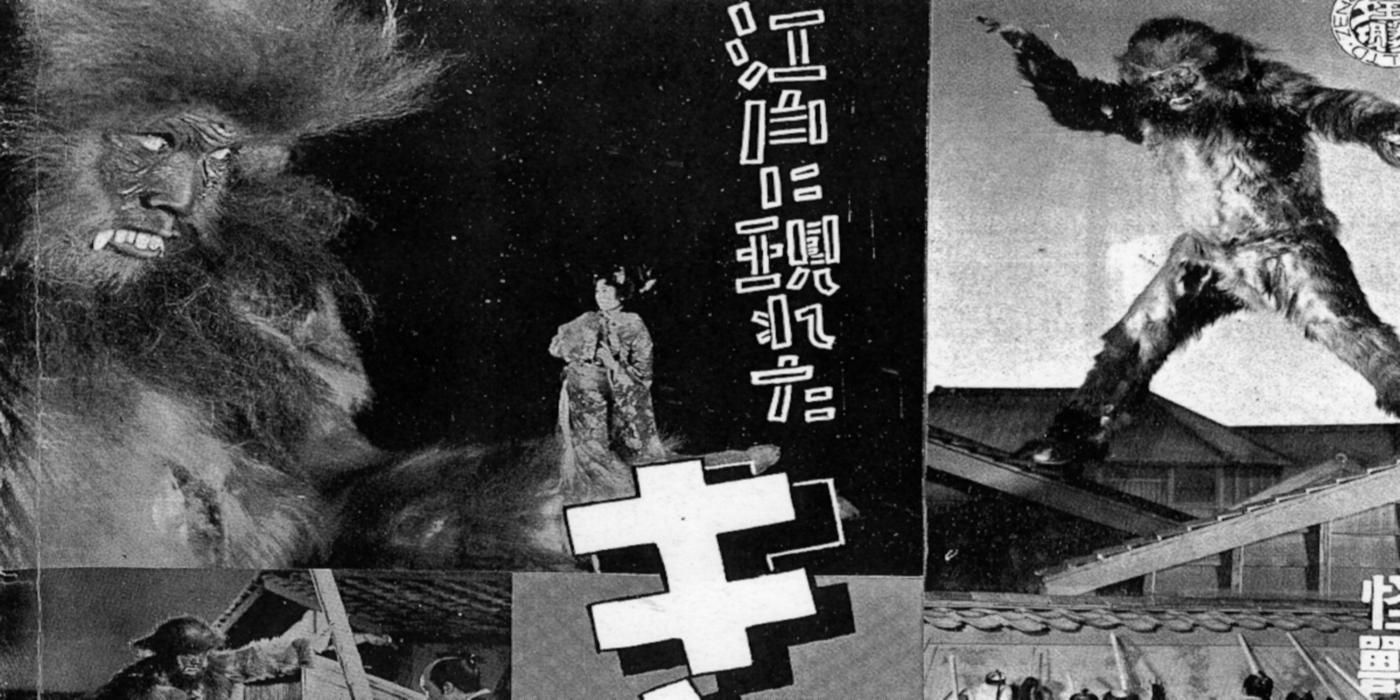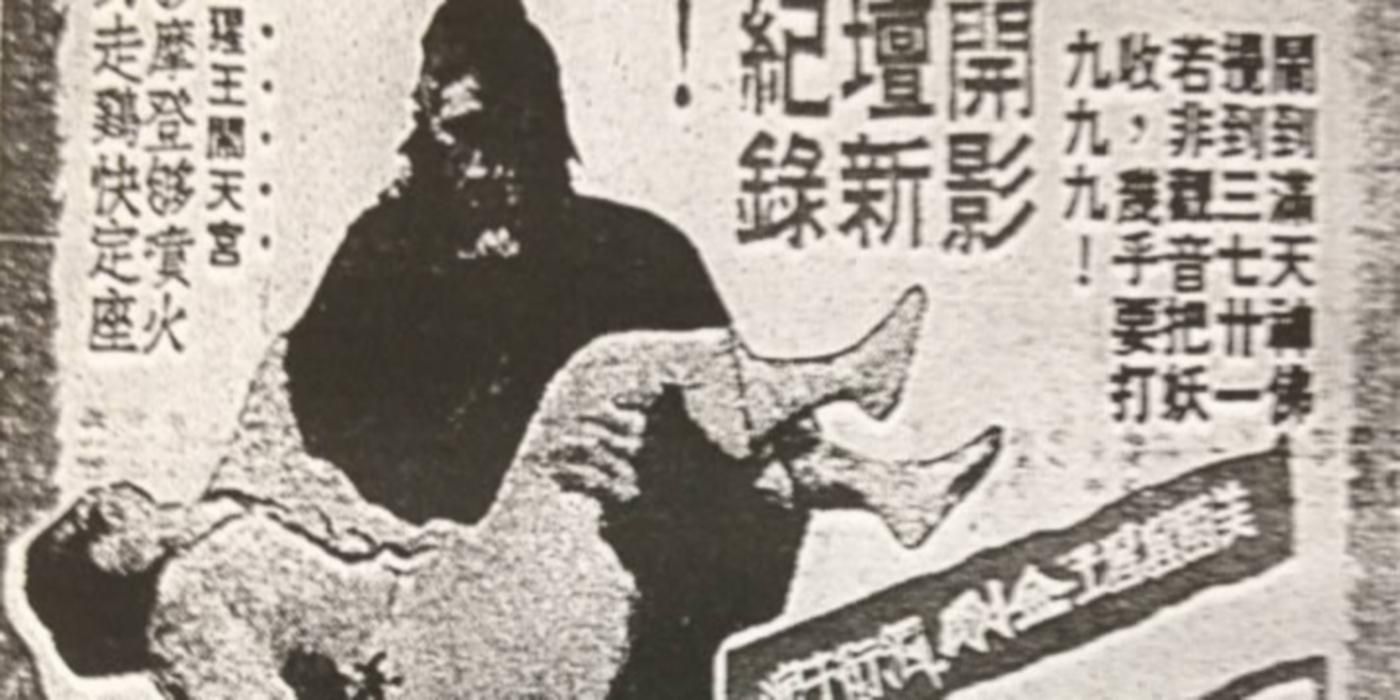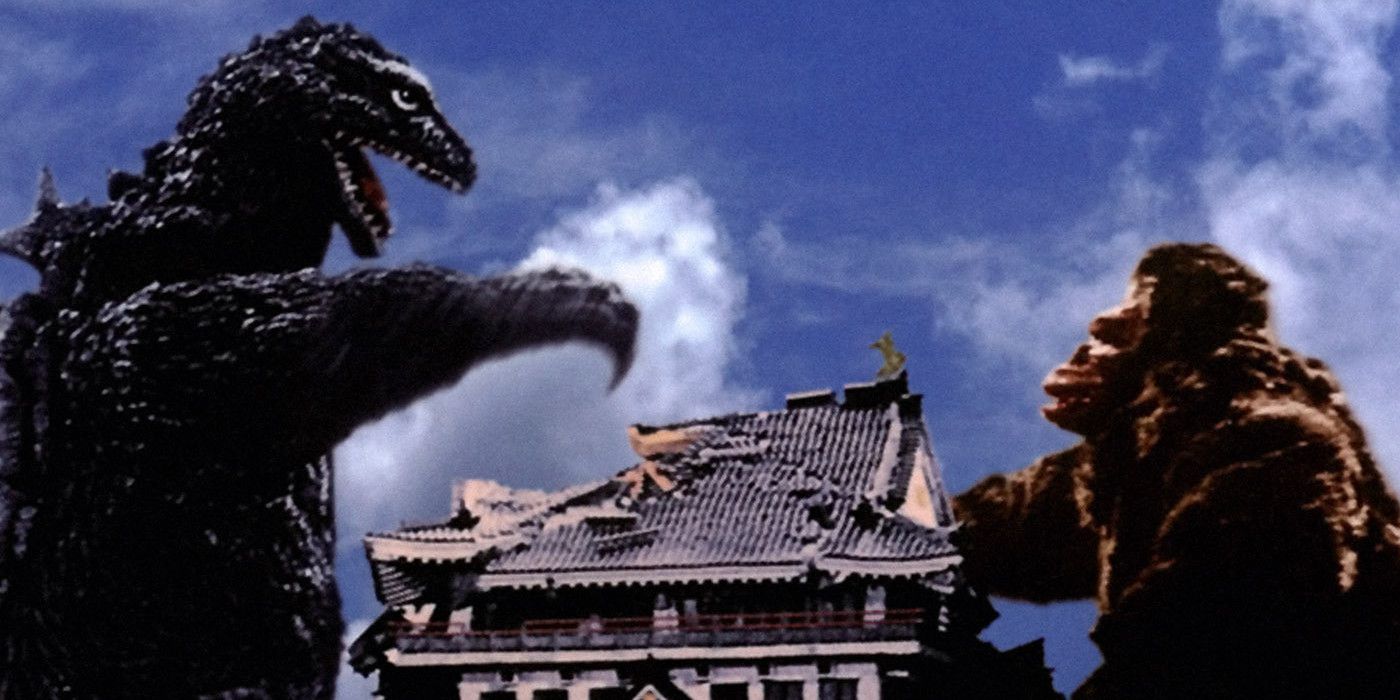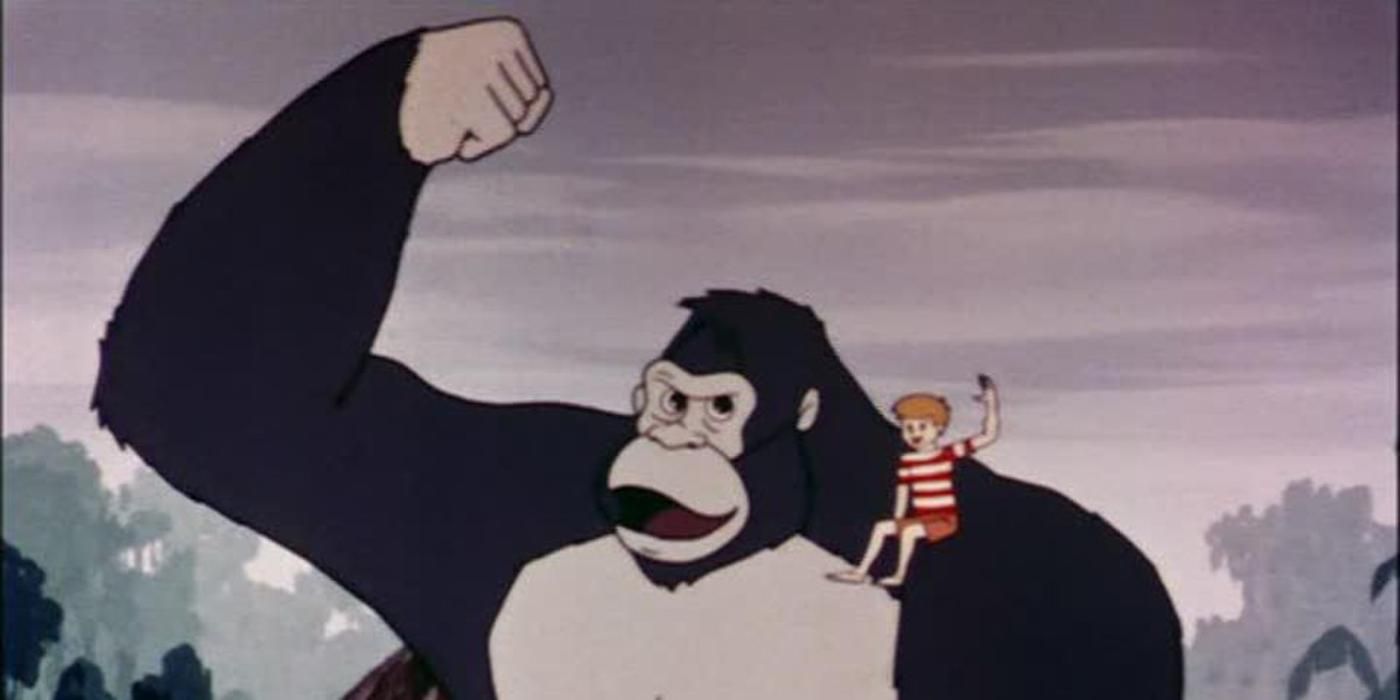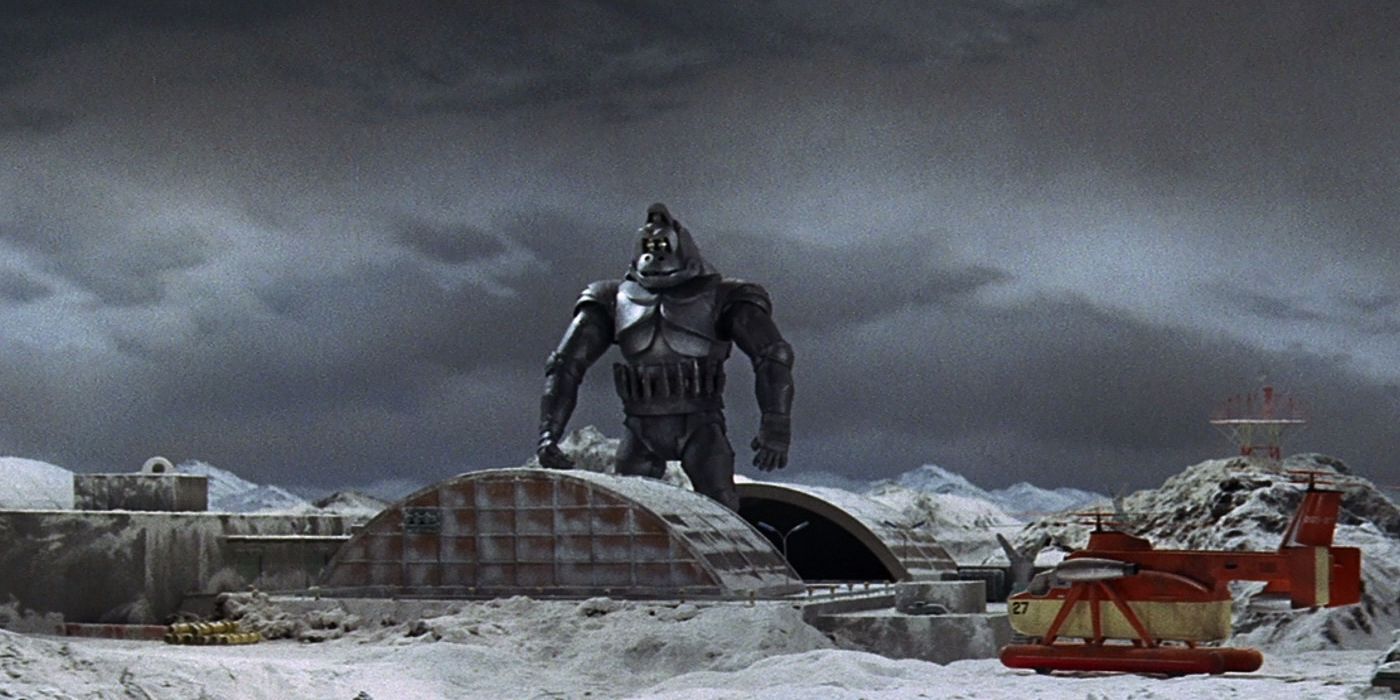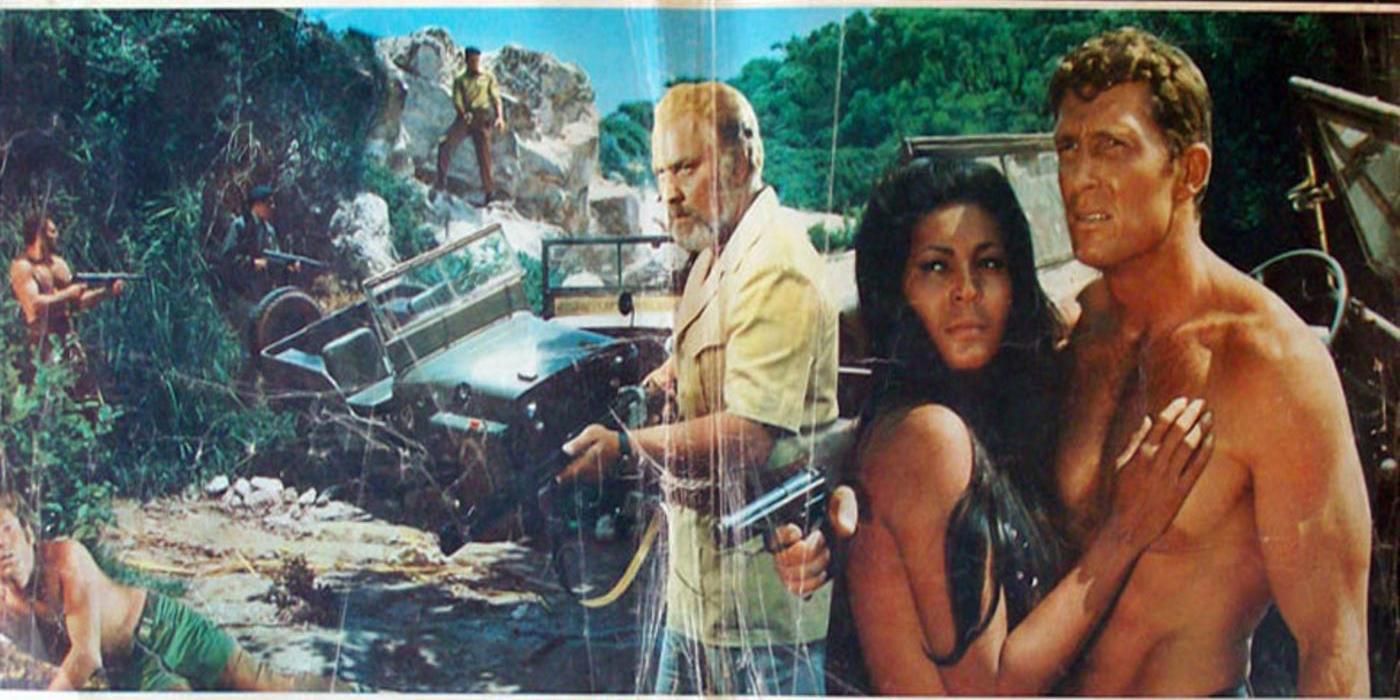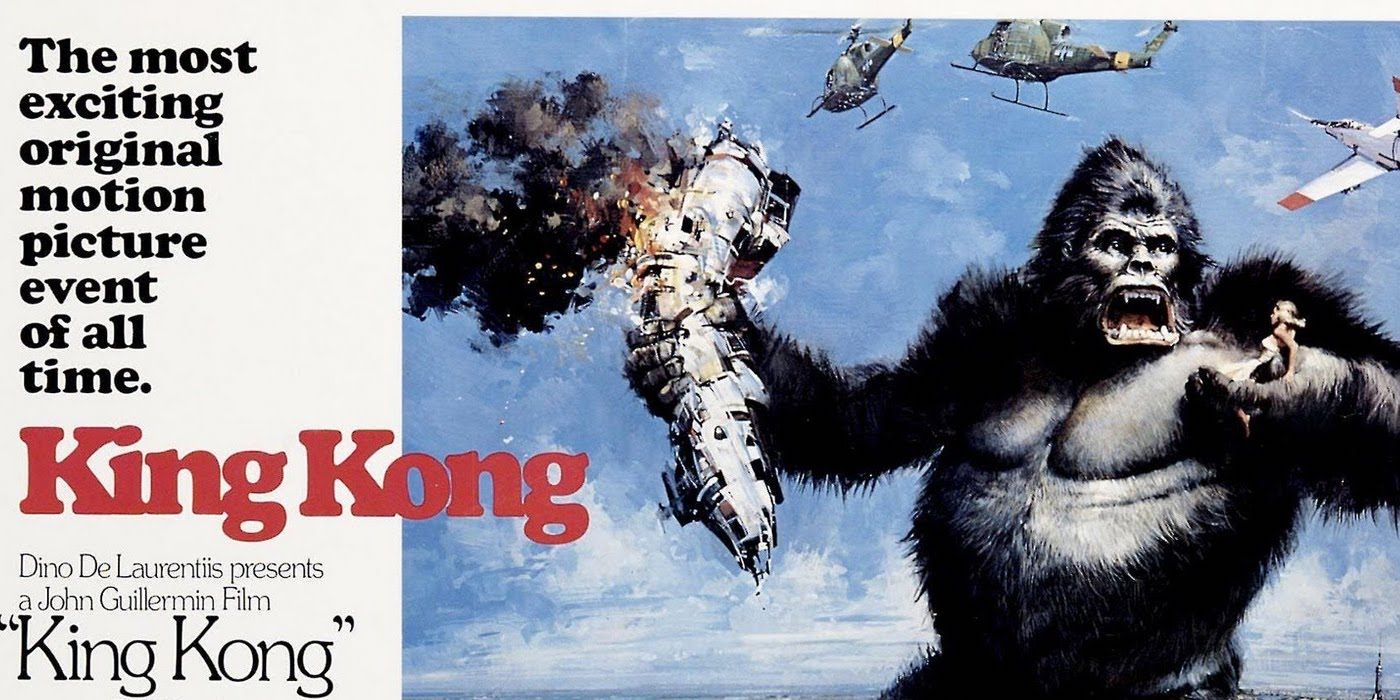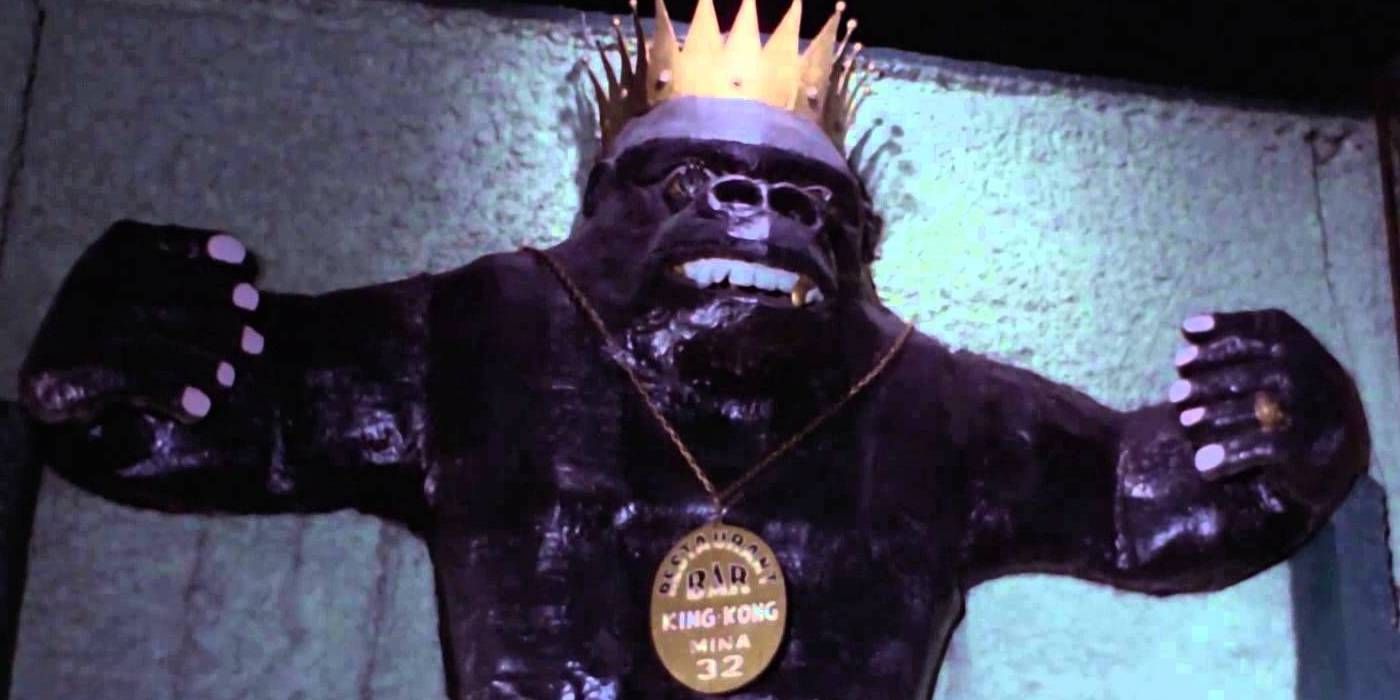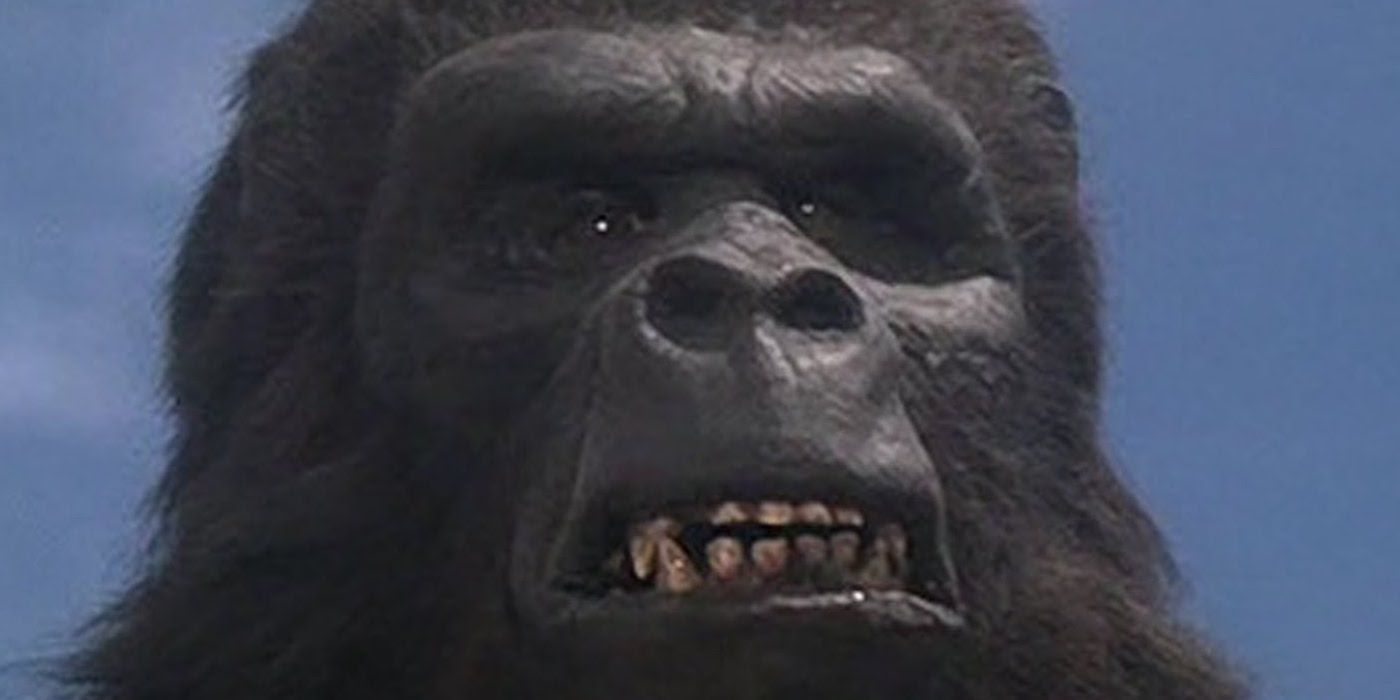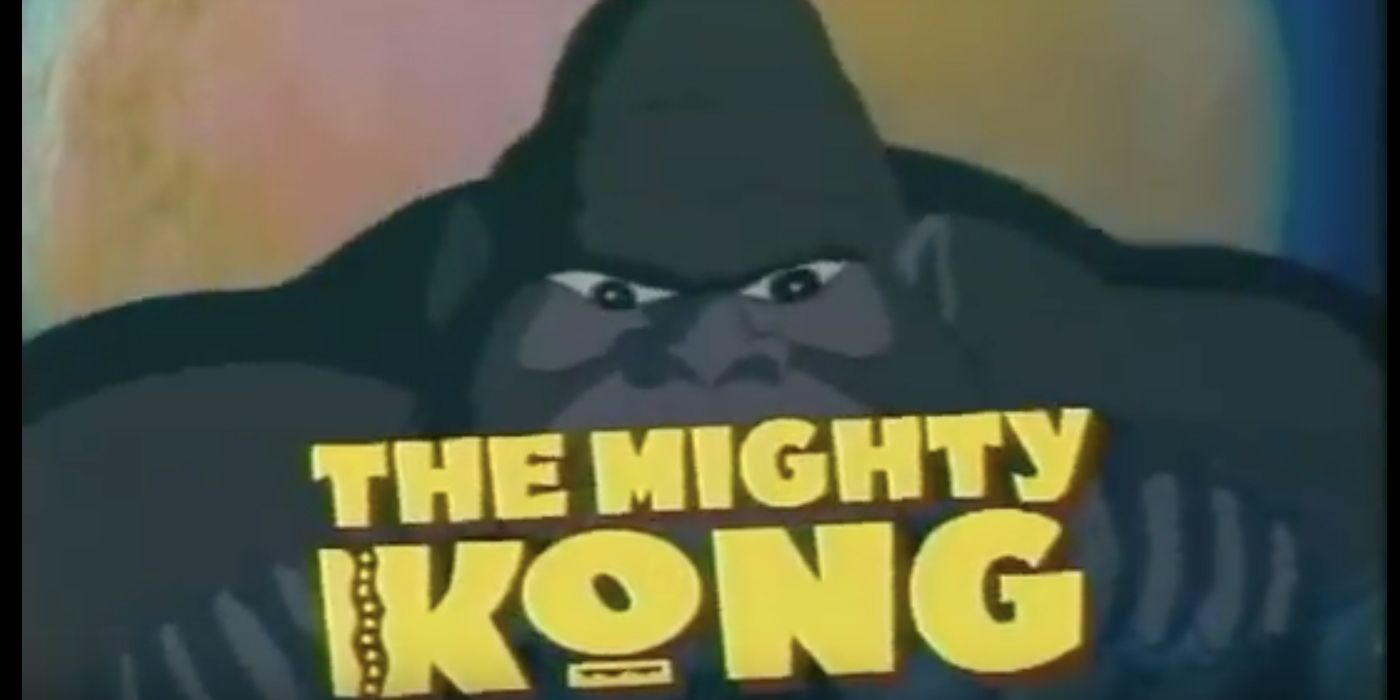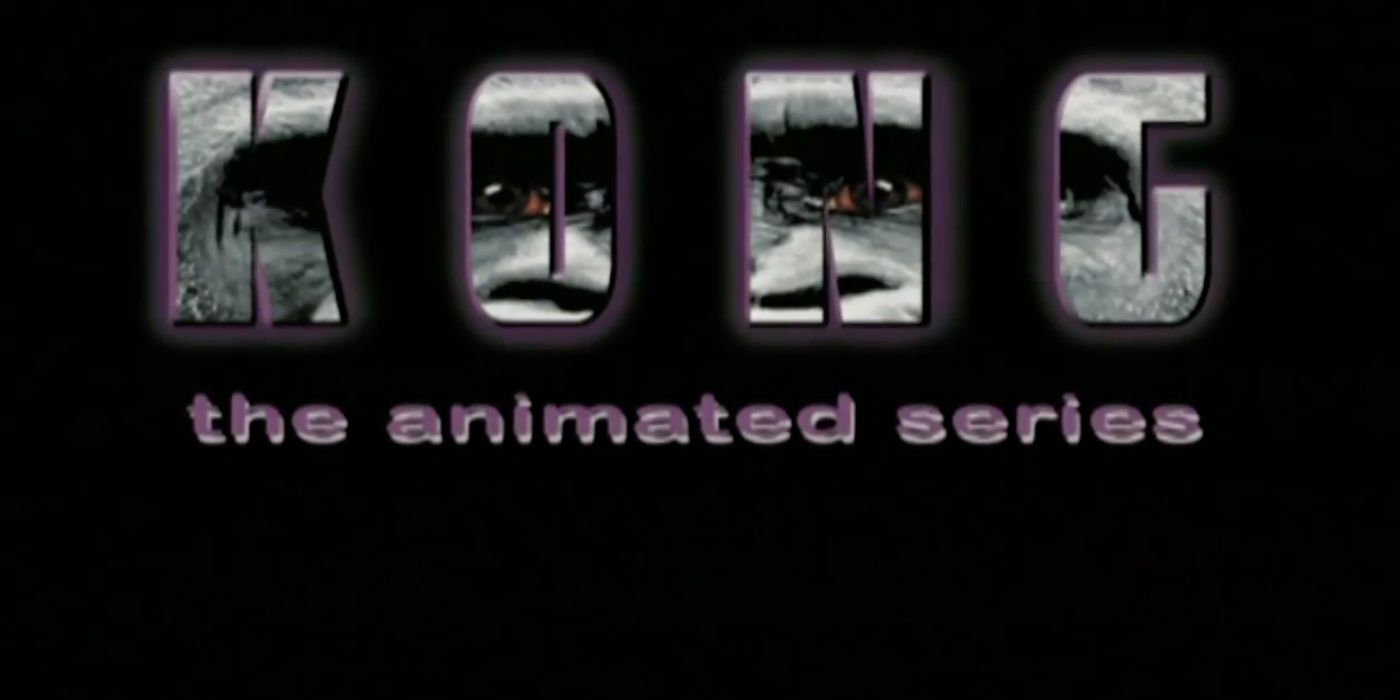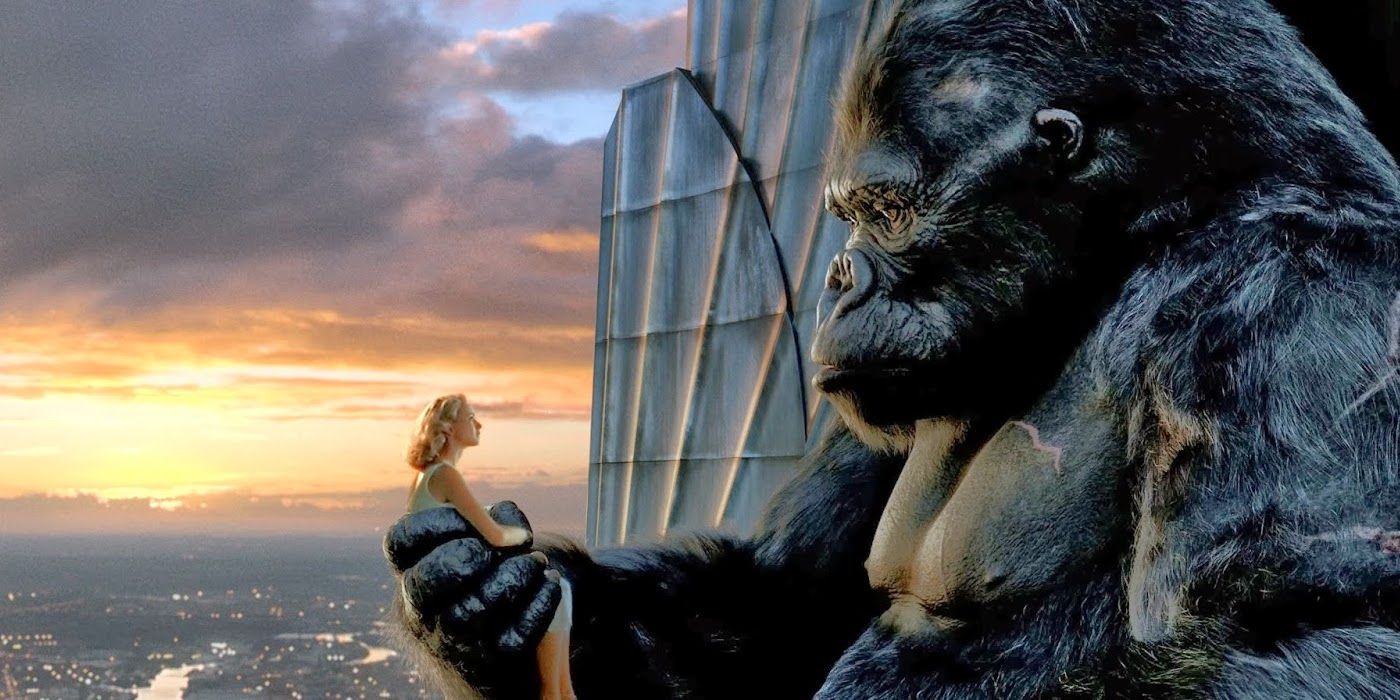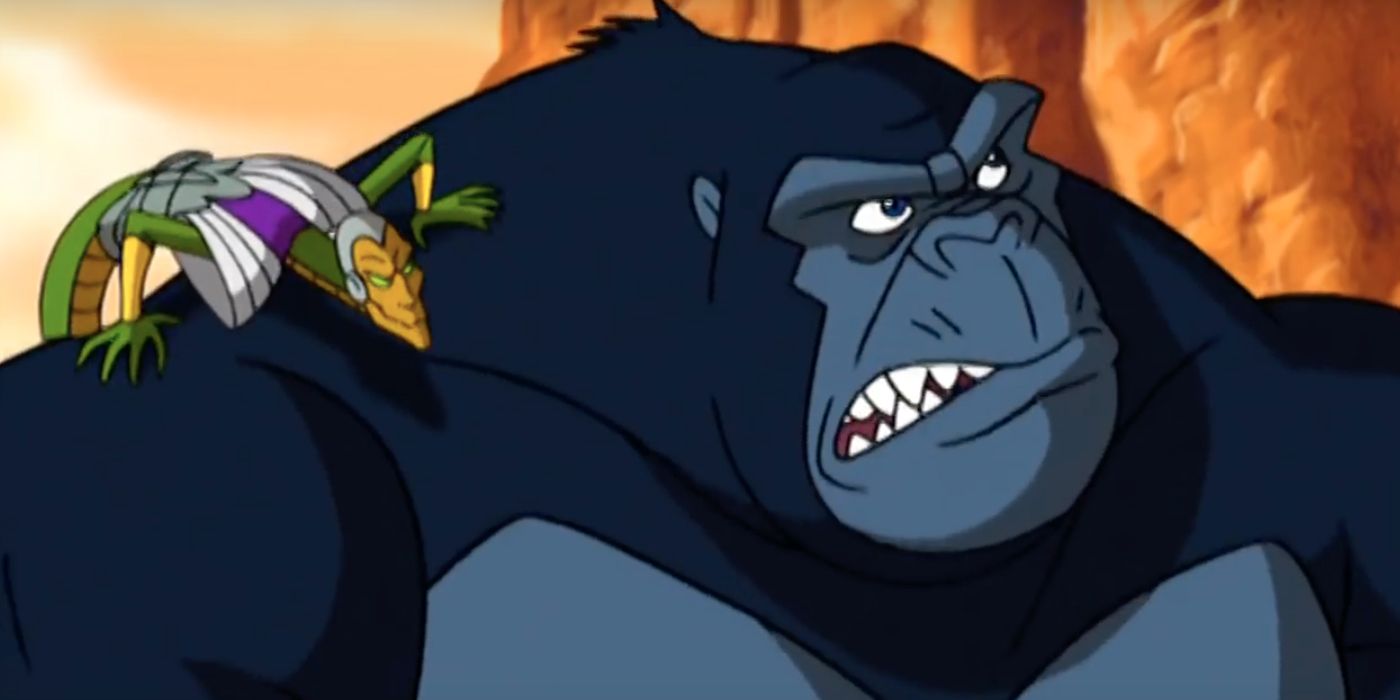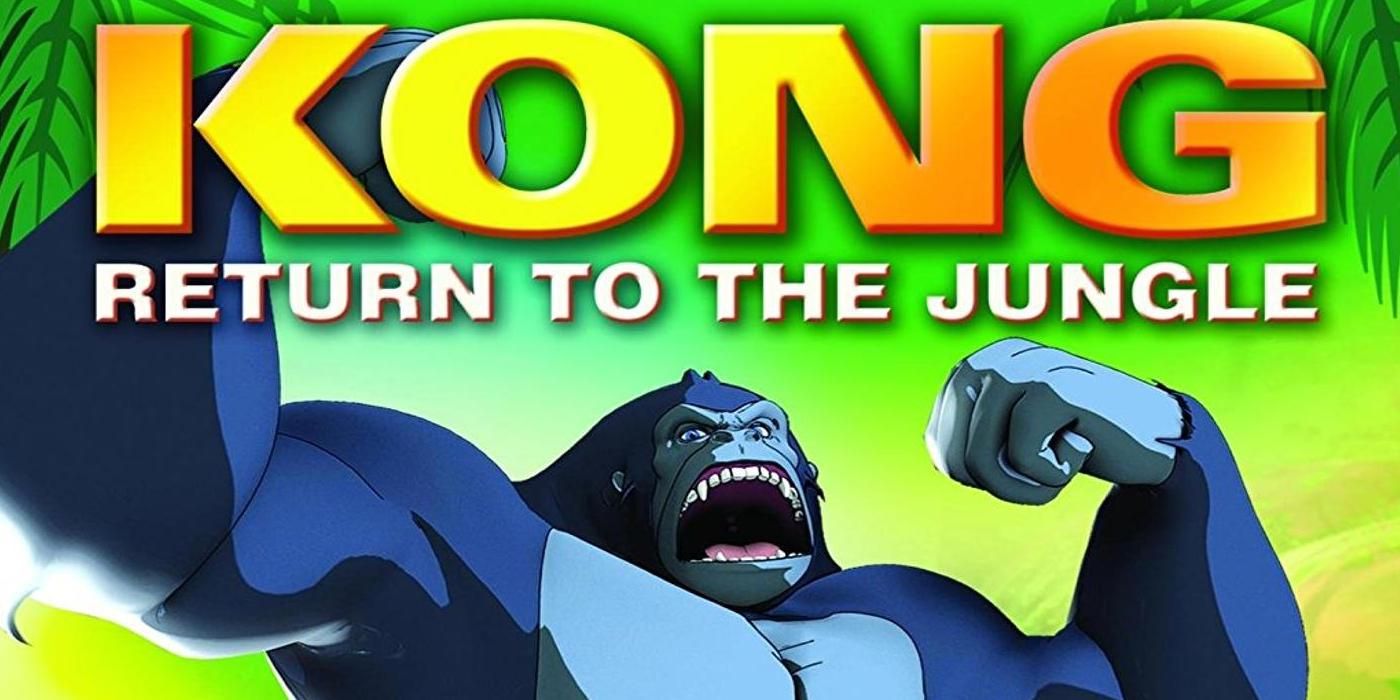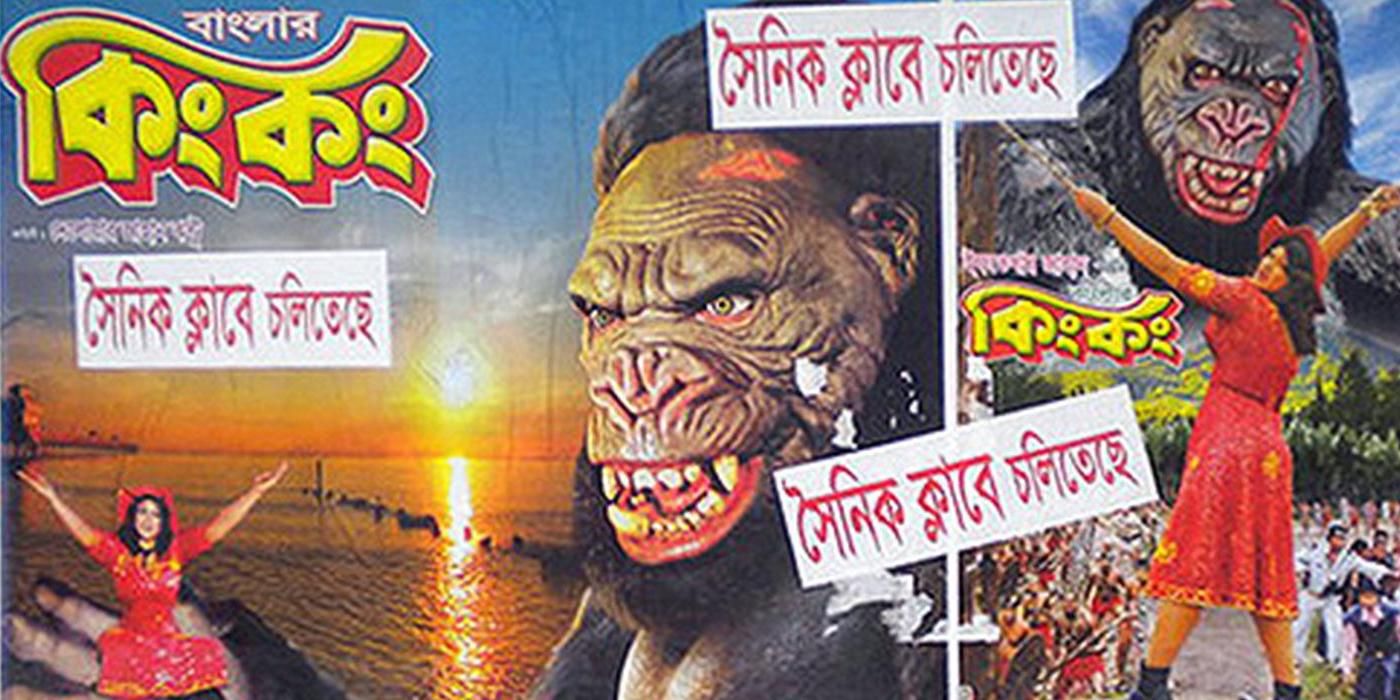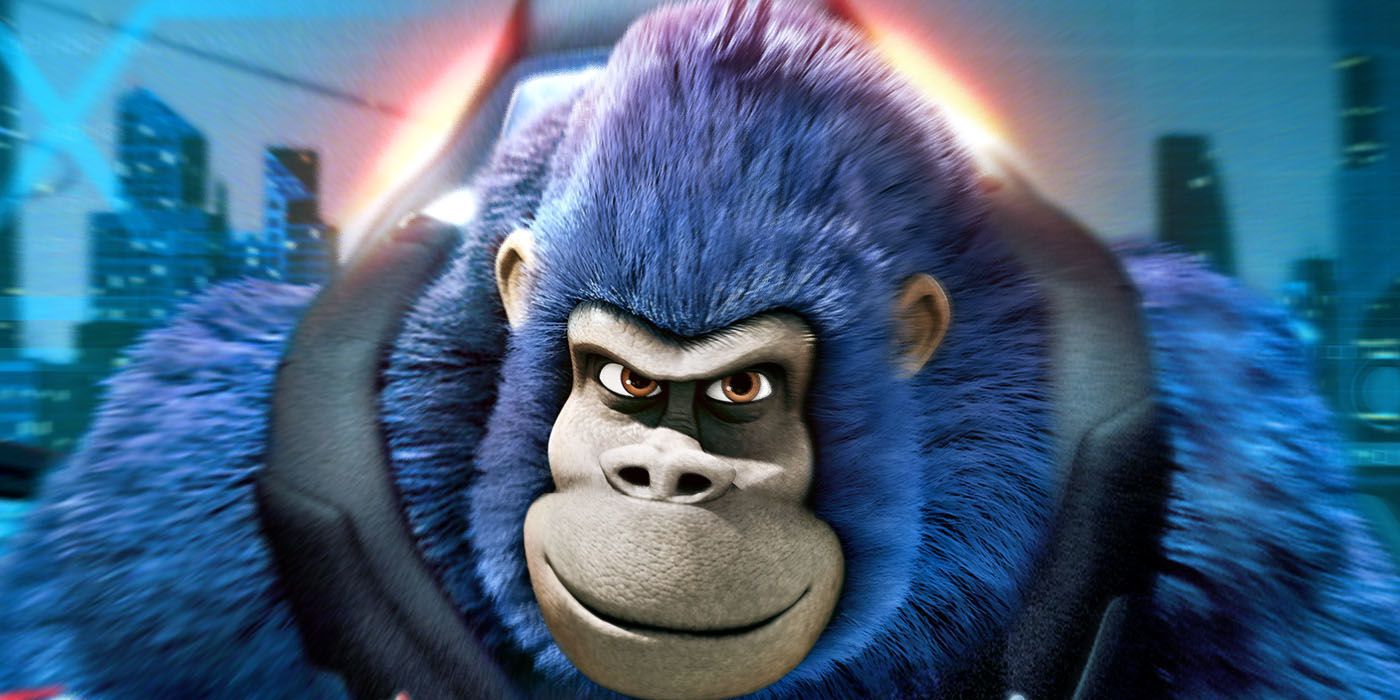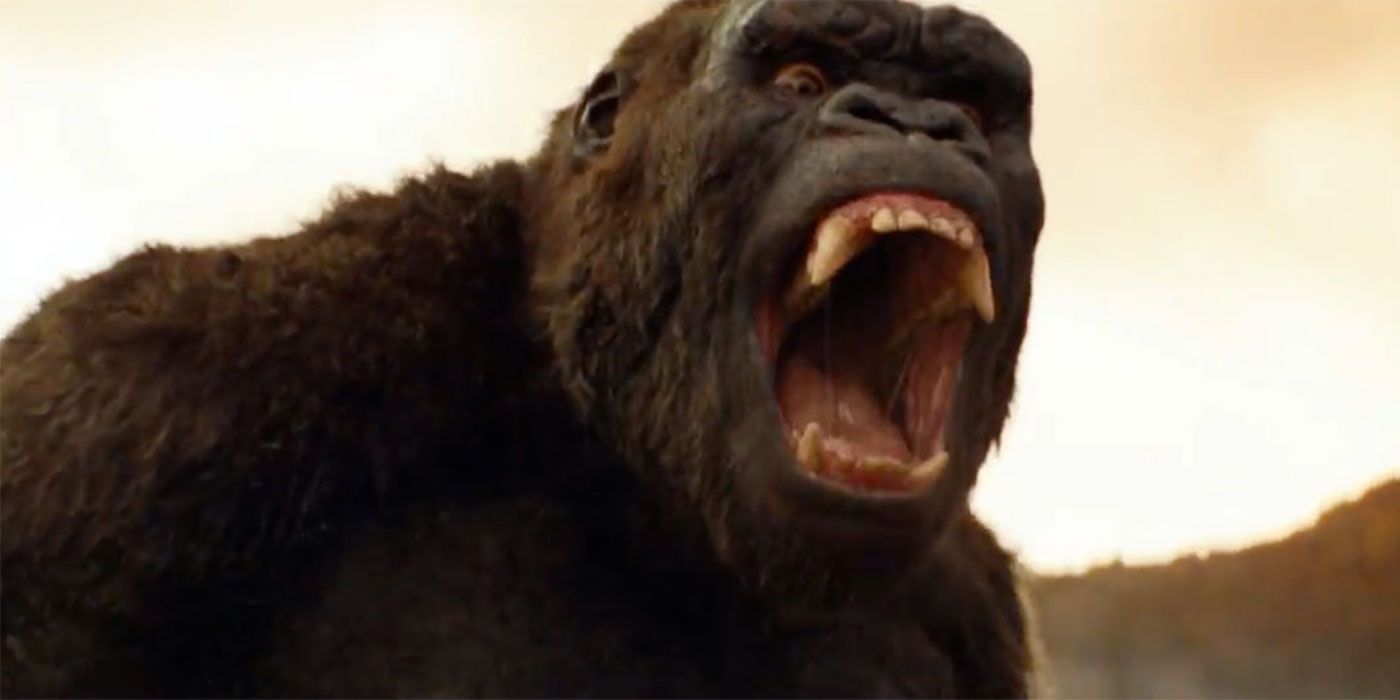Since 1933, Merian C. Cooper’s colossal brain child, "King Kong," has conquered stage, page and games, and has been parodied by everyone from The Beatles to The Simpsons. Despite this, the Eighth Wonder of The World’s true home has always been on the big screen.
RELATED: Kong: 15 Easter Eggs, References And Fun Facts From Skull Island
Interestingly, due to the intellectual property being split between several different groups, there’s no official “canon” for the colossal ape who scaled the Empire State Building. Rather, various incarnations (of varying degrees of legality) have starred in three TV shows, several reboots and sequels, and even two different animated musicals. Here, we collect the many films and TV shows to which the savior of Skull Island has given his name. For a fella who died in his debut, he sure has had a long lifespan.
19 KING KONG (1933)
Naturally, we have to begin with the movie that started it all. The flick that lit a fire that hasn’t dimmed more than 80 years later. A film so captivating and iconic it inspired generations of filmmakers, whose images, particularly the towering beast atop the Empire State Building with a shrieking Faye Ray in his grasp, have become an irreplaceable alphabet in the language of cinema. Over decades, directors have pilfered Merian C. Cooper’s visionary masterwork for what elements spoke to them, be it its thrilling special effects, its bold employment of pathos, or even its understated eroticism, which danced forever on the edge of pulp.
Even if you feel you’ve seen the original work via its many descendants, it's worth a revisit. Too often we think of “King Kong” for its Kaiju-inspiring urban destruction, but the New York excursion only accounts for the final act of the film. Before that, it’s an absolutely ripping adventure in the vein of “Indiana Jones,” whose stop-motion visuals would go on to inspire, and still rival, the master of movie magic himself, Ray Harryhausen.
18 SON OF KONG (1933)
RKO was in a jam. Beauty may have killed the savage beast on screen, but that beast was making a killing at the box office. Now they wanted to strike while the iron was hot and make some extra money in case the whole “King Kong” thing was a fad, but without their main ape, what could they do?
Kong’s creator Merian Cooper was set aside and his partner Ernest B. Schoedsack was given sole control, so RKO set about crafting a comedic encounter between a returning Carl Denham and the goofy, playful child of Kong. Smaller in scale, with softer features and obviously cheaper animation, the child of Kong nevertheless solidifies the idea that Kong’s lineage is a remnant of an ancient race, as opposed to some anomaly or a product of science. Clocking in at little over an hour and released only nine months after the original, the film doesn’t offer much in the way of quality entertainment, but its success at the box office proved the public was craving more Kong.
17 JAPANESE KING KONG/KING KONG APPEARS IN EDO (1933/1937)
While Merian C. Cooper battled RKO over the rights to Kong in the US, the King of the Apes received two unofficial instalments on the other side of the world. “Wasei Kingu Kongu,” known as “Japanese King Kong” and released the same year as the original, is actually a silent comedy revolving around a young man performing a stage show of the popular Kong film in Tokyo. When he spies the girl he loves with another man, he flies into a rage and terrorizes them in the Kong costume.
“King Kong Appears in Edo,” on the other hand, reimagines the titular ape in the Edo period of Japan, as a large Golem-like creature under the control of Magonojyo, a servant of Hyoue Toba. Toba’s daughter is kidnapped by Kong in retribution for Toba’s role in the death of Magonojyo’s father. This two-part silent film serves as the introduction of the often revisited idea of Kong as an ally to man and as a hero in his own right. Tragically, both films are unavailable today and considered lost.
16 KING KONG'S ADVENTURES IN THE HEAVENLY PALACE (1959)
Just as Japan was enraptured by RKO’s ape and reimagined it for their own culture, so too did China deliver their take on Kong, making a radical departure from the original film and infusing a large amount of Chinese mythology into the story. Never given a proper American release, “King Kong’s Adventures in the Heavenly Palace” lives on only in the form of grainy Chinese VHS tapes, available only to the most determined of cinephiles.
Known more for being a bizarre curio than a quality film, almost everyone associated with the production of “Adventures in the Heavenly Palace” was attached to the revered Wong Fey Hung martial arts franchise, and was tasked with quickly assembling this variation of the “Monkey King” stories (these kind of no-budget rush jobs are colloquially referred to in China as “Seven Day Wonders”). Its bizarre plot involves a human-sized Kong escaping from the celestial zoo to attack the Earth until he is defeated by the Goddess of Mercy. This film is more for “Journey to the West” fans than lovers of Kong’s trademark carnage.
15 KING KONG VS. GODZILLA (1962)
Of all the films with some Kong in their celluloid DNA, undoubtedly those of the Toho production company in Japan are the most indebted to the beast from Skull Island. He and “The Beast from 20,000 Fathoms” were the primary inspirations for Toho’s mega-success “Gojira” in 1959, and consequently the entire iconic kaiju genre. Therefore it was inevitable that Toho would want to bring the two titanic icons together in an epic battle, and unlike past representations of the great ape, Toho went so far as to obtain the rights from RKO. This was much to the chagrin of creator Merian C. Cooper, who instead wanted Kong to next fight Tarzan on the big screen, kicking off a string of legal battles over ownership that would stretch all the way to Nintendo’s own 8-bit ape, Donkey Kong, two decades later.
As for the actual film, “King Kong vs. Godzilla” is small in story and large on iconically clunky kaiju action. It does, however, establish Kong as the clear hero of the giant monsters, and Godzilla still a terrorizing force rather than the equally heroic figure he would develop into. It also casually gives Kong lightning powers, but the less said about that, the better.
14 THE KING KONG SHOW (1966)
Produced by American animation leaders Rankin and Bass (best known for “Rudolph the Red Nosed Reindeer") and animated by the Toei Animation company (later known for “Sailor Moon”), “The King Kong Show” ran for three seasons in the US. It expanded upon the already established Japanese concept of King Kong as a friend to mankind who fights for the forces of good.
The show revolved around Kong’s adventures with the Bond family, particularly a spirited young boy named Bobby, as they set out to help all the distressed creatures on their island. Oftentimes, Kong is set upon by various equally gigantic enemies under the control of the evil Dr. Who (Not to be confused with "Dr. Who"). Admittedly, “The King Kong Show” was populated by the same kind of empty plots as the majority of ’60s kid shows, but it is a fascinating relic of its time, with animation that calls to mind “Speed Racer” and “Gigantor.” Sadly, however, all but eight full episodes of the show appear to be lost to time, including any involving Kong’s main nemesis, Mechanikong.
13 KING KONG ESCAPES (1967)
The second and final Toho film, “King Kong Escapes” draws directly from Toei’s “The King Kong Show,” building a story around Dr. Who and Mechanikong, but substituting Bobby Bond and his family for the virile adventurer Commander Carl Nelson. From the massive lair of Dr. Who to the casting of Mie Hama (who previously played Kissy Suzuki in “You Only Live Twice”) as Who’s assistant, Madame Piranha, “King Kong Escapes” couldn’t escape the spy movie mania ignited by James Bond in the late ‘60s, which only adds to its absurd charm.
One of the most visually delightful films in all of Toho’s catalogue, in no small part due to its design for Dr. Who’s lair and costume, reminiscent of the later Bond film “The Man With the Golden Gun,” and also due to the live action realization of “The King Kong Show’s” Mechanikong. “King Kong Escapes” plays like the perfect fusion of Japanese and American ’60s cinema. In fact, the film goes so far in blending those sensibilities as to cast both American and Japanese actors, each speaking their native tongue and being dubbed over for the other country’s version, in the style of Sergio Leone Westerns.
12 KONG ISLAND (1968)
“Sacred Monkey? What’s that?” “Oh, they’re some kind of sacred wild monkeys.”
Yes, that’s the kind of top-notch writing on display in “Kong Island.” That’s right, long before Legendary Pictures came up with the name, there already was a “Kong Island,” otherwise known as “King of Kong Island.” Well, known that way in the U.S. In Italy, it was known as “Eva, la Venere Selvaggia” or “Eve, the Wild Woman.” This Italian sexploitation film ultimately has little to do with the titular ape, nor the titular island, and sets out simply to titillate with topless women, worn out B-movie tropes and substandard grindhouse action.
Instead of a colossal ancient ape, the primary primates of the picture are actually gorillas manipulated by a mind-control device, and the above mentioned “Sacred Monkey” actually refers to a jungle woman whose choice of attire is…well, minimal. All that said, it does introduce the concept of a Kong mind-control device, a concept that will be mined heavily in the sci-fi genre for decades to come, and “Kong Island” makes for decent viewing, permitted you and your friends do some “MST3K” commentary throughout.
11 KING KONG (1976)
The first King Kong film to win (or even be nominated for) an Academy Award, legendary producer Dino De Laurentiis’ “King Kong” actually tied with sci-fi classic “Logan’s Run” for Best Visual Effects. Looking back…well, they probably should have just let Logan have it.
A huge box-office success in its day and garnering some rave reviews from esteemed critics like Pauline Kael, this attempt at a “modernized” remake has not aged well, not just in its odd departures from the original, including a topless Ann Darrow and Kong ascending (and causing the partial destruction of) the World Trade Center, nor its very dated and unconvincing visual effects or poor handling of the subject of race; it also has the distinction of pissing off two of America’s most beloved actresses. The film was Jessica Lange’s debut, who despite winning a Golden Globe, was so hurt by the torrent of negative reviews that she took a three-year hiatus to hone her craft. Additionally, a young Meryl Streep was up for Lange’s role, only to reportedly be turned away when a producer found her “too ugly.” History, of course, has been much kinder to these women than it has De Laurentiis’ hubristic remake.
10 LAS MUNECAS DEL KING KONG (1981)
To date, “Las Munecas Del King Kong” (translated to “The Dolls of King Kong”), is the only Spanish-language Kong film, though were it not for the title and one bizarre statue, one could be forgiven for not realizing there were any at all. While the film makes no effort to obscure its sexploitation nature - even the film’s poster is riddled with nudity - its usage of the iconic Kong is downright absurd.
The Kong in this film is a statue that looms over a jungle nightclub, adorned with a crown and a medallion bearing his name, arms wide, glaring down at the proceedings. It’s for the viewer to decide if the statue possesses any supernatural element that stokes the madness which occurs within the confines of the club, or if its presence is merely a metaphor for the animalistic nature of the characters. So instead of being about giant gorilla, it’s kind of like “The Shining”, you know, if "The Shining" were a Mexican softcore porno.
9 KING KONG LIVES (1986)
If you thought unnecessary, decade-too-late sequels started with “Anchorman 2,” clearly you forgot about Dino De Laurentiis’ return to the well with 1986’s “King Kong Lives”. Granted, you’d be forgiven as just about everybody forgot about “King Kong Lives,” which proved to be as much a financial failure as its predecessor was a success, making a meager $4M on an $18M budget and currently sitting at a 0% on Rotten Tomatoes.
Starting with a recap of Kong being shot down in the ’76 remake, “King Kong Lives” reveals the titular ape was actually simply in a coma for ten years and had been given an artificial heart by Dr. Franklin, played by a fresh off “The Terminator” Linda Hamilton. Unfortunately, Kong needs a blood transfusion, and no known animal is a match, so adventurer Hank Mitchell goes to Borneo wherein he finds a female giant ape that presumably the entire populations of Malaysia, Brunei and Indonesia never noticed, and dubs her Lady Kong. Naturally, Kong and Lady Kong run off together, are hunted down by the military, and you can fill in the blanks from there. To the film’s credit, though, it did inspire a fairly fun Kong video game for Nintendo’s Famicom in Japan.
8 THE MIGHTY KONG (1998)
Nowadays, it is not uncommon for great films to bypass theatrical release and go right to an audience’s home. In the ’90s, however, with rare exception, when one picked up a direct-to-video movie, one knew what they were getting into. Needless to say, this Warner Brothers-produced cash grab curio was direct-to-video.
Produced and titled specifically to cash in on Disney’s remake of “Mighty Joe Young,” the film is an animated musical which repeatedly posits itself as a “family friendly version of the classic Kong story,” which is odd not only as there’s hardly anything conventionally considered objectionable in the 1933 classic, but also because this “family friendly” film opens with a straight-up human sacrifice on Skull Island. It does, however, replace armed propeller planes with two blimps and a net, and has Kong survive his fall, as well as shoehorn in a plucky kid, his monkey sidekick, and more musical numbers than you could ever want. Some of these songs, by “Mary Poppins” composers The Sherman Brothers, are beautifully performed by “The Little Mermaid” herself, Jodi Benson as Ann Darrow, while the remainder are aggressively shouted by the legendary Dudley Moore in his final role as the inexplicably renamed CB Denham.
7 KONG: THE ANIMATED SERIES (2000)
Created to compete with Fox Kids’ successful “Godzilla: The Series,” “Kong: The Animated Series” lasted for two seasons and a total of 40 episodes as part of the BKN-syndicated Saturday morning cartoon block, which is the same final episode count as its rival. It was later revived in reruns by ABC’s Jetix programming block in 2005.
“Kong: The Animated Series” actually followed a clone of the original King Kong created by scientist Lorna Jenkins, who infused a portion of her grandson’s DNA in with Kong’s. As a result, Jason can use a Cyber-Link to connect to and control Kong, and sees Kong as his brother and childhood playmate, frequently calling him “bro.” Yes, Jason is the typical late ‘90s “cool dude” protagonist, playing like a knockoff of "Batman Beyond's" Terry McGuinness both in design and demeanor, and the central plot about Skull Island having 13 Primal Stones used to unlock an ancient evil, including an “Infinity Stone” and a “Stone of Stones,” is astoundingly convoluted. However, the show’s relative longevity should attest to its ability to reasonably entertain.
6 KING KONG (2005)
What happens when a freshly prestige director seems to prefer making films longer than three hours combines with just-barely-there C.G.I. techniques during a decade whose cinematic movement seemed to be “taking everything super-serious and introspective?” A three-hour-and-15-minute sentimental remake of “King Kong,” that’s what.
To be fair, Peter Jackson’s big-budget remake is the most Oscar-winning Kong film to date, taking home prizes for Sound Mixing, Sound Editing and Visual Effects, and it received heaps of praise from the critics of its day. Audiences, however, were and remain divided, with some considering it a classic in its own right, and others feeling the film is bogged down by its lethargic pacing and dreary tone. While Jackson’s “King Kong” is still remembered fondly for its realistic visuals, it arguably suffers most from a reverence for, and repeated references to, the original film that are so constant that the film itself seems to call into question its very purpose in attempting to “reinvent the wheel.”
5 KONG: KING OF ATLANTIS (2005)
With Peter Jackson’s "King Kong" on the horizon, the team behind "Kong: The Animated Series" decided to get back together for a direct-to-video sequel to their show. Strangely, "Kong: King of Atlantis" never attempts to fill the viewer in on exactly how this incarnation of Kong came to be, how he and Jason can psychically link, nor even give the faintest bit of context as to who any of the supporting players in the film are; it seemingly operates under the assumption all its viewers would have been caught up on all 40 episodes of the show and remember the details of it half a decade later.
Inexplicably, this direct-to-video Kong cartoon is also a musical, and the employment of said musical numbers throughout the film is downright confounding. Jason and island shaman Lua share a cringeworthy duet imploring Kong to make a decision; later the two share a lamenting ballad about their fractured friendship that at times seems to abandon all sense of rhyme or rhythm. Perhaps most bizarre, however, are the bug-like creatures who serve an Atlantean serpent woman who perform a Cinderella-like “dressing up the king” number while placing regal robes on Kong who, they just casually mention, is King of Atlantis.
4 KONG: RETURN TO THE JUNGLE (2007)
Despite "Kong: King of Atlantis" not making any significant waves, it apparently did well enough that the "K:TAS" team decided to produce a sequel. This time, however, they would eschew the hand-drawn 2D animation of the series and previous film in favor of computer animation which its box advertises as “State-Of-The-Art CGI Animation!” To describe this exclamation as false advertising is an understatement.
Delivering a simple story of Kong being pursued by poachers, almost every cast member from the original series seems to act out of character, and are reduced to little more than single-minded, single-purposed caricatures. Lua is now a mere “pretty love interest,” Jason solely exists to spout “bro” every few minutes, Dr. Lorna Jenkins is nothing more than a friendly scientist who routinely bakes pies and Eric “Tann” Tannenbaum is merely a goof whose rarely discussed celebrity saves the day in lieu of any of the typical technology or teamwork-based resolutions the show made a habit of employing. Though this incarnation stuck around longer than anyone expected, or indeed realized, the lazily assembled "Kong: Return to the Jungle" was dead on arrival and provided the final nail in the coffin for "K:TAS".
3 BANGLAR KING KONG (2010)
Countries like China, Japan and Mexico have all given their very distinct spin to the character of Kong, filtering it through their own culture and reinterpreting it it radically different ways. Bangladesh, however, whose first ever feature film was produced only two years before the original "King Kong," decided to remake the classic tale in a fairly faithful fashion, albeit with more than a little of the musical flair common in the cinema of its neighboring nation, India.
The production value is objectively sparse, particularly when one considers that this was the first live-action Kong in half a decade, directly preceded by Peter Jackson’s Oscar-winning VFX. However, this self-described “action comedy” seems fully aware of its minimal budget and unimpressive effects, taking every opportunity for characters to mug for the camera in order to convey that they are indeed “in on the joke.” The joy of "Banglar King Kong" is that the humor comes not from spoofing Kong, but rather from the sincerity with which the film sets about to retell and reimagine the story, and the respect the team clearly has for the original work, all the while being totally aware, and having fun with their own budgetary constraints and technical limitations.
2 KONG: KING OF THE APES (2016)
With only one season currently available, though recently renewed for a second, this Netflix computer-animated kids’ show seems far more indebted to "Kong: The Animated Series" than the original 1933 film. Set in the distant future of 2050, the 13-episode first season crams an entire season’s worth of plot into its feature-length first episode, which showcases a growing rivalry between conservationist Lukas Remy and his twin brother, the tinkerer Richard Remy. After Lukas rescues Kong from poachers, Kong returns the favor by rescuing Richard from a lab fire, only for Richard to blame Kong for the injuries he accrued in the blaze. This instills in Richard a hatred for Kong that fuels the story for the rest of the series.
The animation feels like a missing link between 1994’s "ReBoot" and the haphazardly assembled C.G.I. children’s cartoons of today. The show suffers from that type of weak animation, some poorly written characters, a grating over-reliance on the word “bro” and an in-show “achievement” system for unlocking bonus content that’s confusing even for adults. Still, the show somehow possesses a small amount of charm, and while it bares little resemblance to any of Kong’s rich cinematic history, it clearly draws deeply from Kong’s TV legacy.
1 KONG: SKULL ISLAND (2017)
Yes, Kong is back in a shiny new reboot. Whether you enjoyed Gareth Edwards' murky reimagining of "Godzilla" in 2014 or not, this companion piece has something to offer you as Legendary builds up their own shared universe, culminating in a recently announced "Godzilla vs. King Kong" in 2020. Set in the 1970s, director Jordan Vogt-Roberts trades Edwards' dark, deliberately paced style in favor of bright lights, vibrant scenery and constant action.
In lieu of Carl Denham and Ann Darrow, we have swashbuckling tracker James Conrad and war photographer Mason Weaver, both of whom find themselves traveling alongside Samuel L.Jackson’s incendiary Preston Packard, an Army officer who functions as an Ahab-like figure looking for a clear victory after the disappointment of Vietnam. Together, they stumble upon the film’s heart and highlight, John C. Reilly as the stranded Hank Marlow, who functions as Dennis Hopper in "Apocalypse Now" to Kong’s brooding Brando. "Kong: Skull Island" seems to be the first revisit to the world of Kong that remembers how thrilling an adventure the original "King Kong" was during its Skull Island scenes, and this new film taps into that same sense of exhilarating cinematic excitement, and makes the titular ape more relatable without removing any of his edge.
"Kong: Skull Island" or the original "King Kong?" Which one do you prefer? Let us know in the comments!

